©2025 ZenABM - All Rights Reserved.
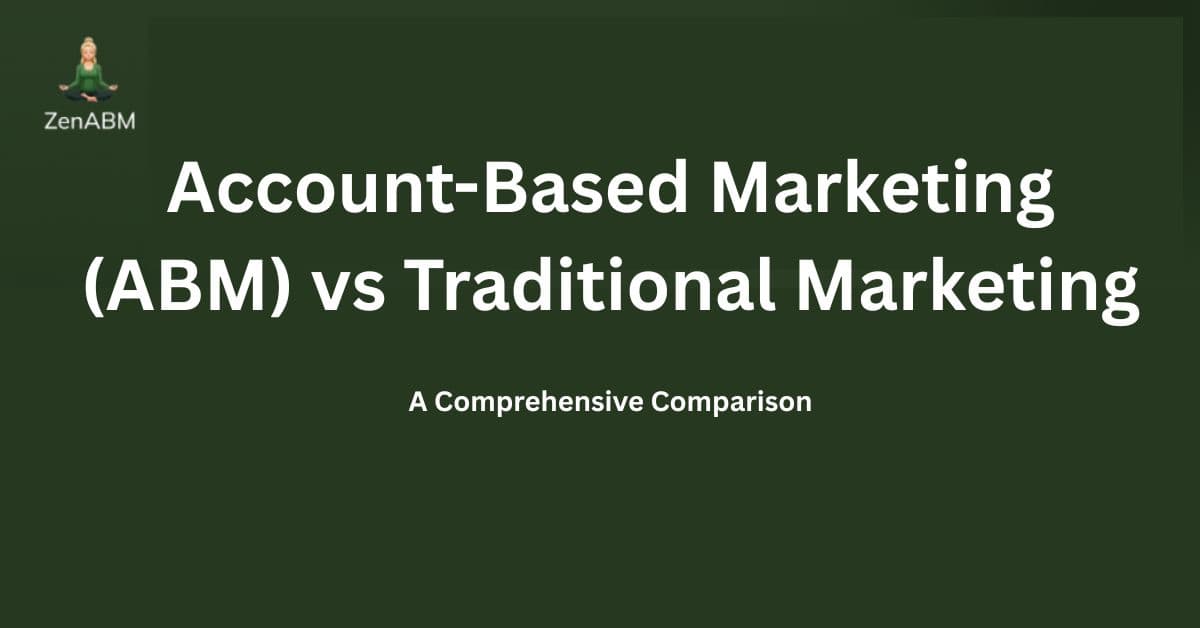
Okay, so maybe you are looking for a heated debate: Account-Based Marketing vs. Traditional Marketing.
However, the truth is that none of them is objectively better than the other. And you don’t always have to choose one.
Some businesses can run both simultaneously, while for some only one of them is suited.
I have taken up all these questions in this article and compared both ABM and traditional marketing (mainly conventional lead generation), so you can choose the strategy that fits your goals.
Plus, there’s an account on how ZenABM can help you if you choose ABM.
Read on…
Traditional marketing refers to broad-reach marketing methods businesses have used for decades to promote products or services.
This included classic offline channels like print ads, TV/radio commercials, direct mail, billboards, and cold calls.
Now it also includes online channels like SEO-led lead generation, email blasts, social campaigns on platforms like LinkedIn, and random display ads.
But this mindset remains common here: Casting a wide net to capture as many leads as possible in the funnel. Marketers call it the “spray and pray” method, and rightly so!
Success in this approach is often measured in aggregate metrics like:
Traditional methods offer several benefits in the right scenarios:
In summary, traditional marketing is about reach, volume, and awareness, making it a viable choice when your goal is to cast a wide net and attract as many potential customers as possible with a unified message.
So, yes, traditional marketing aces awareness.
But the broad-brush approach has downsides.
Because messaging is generalized to appeal to a wide audience, it lacks personalization, which can result in lower engagement from any individual prospect.
You might get many leads, but they may be less qualified or less interested on average.
Traditional marketing can also lead to misalignment between marketing and sales. In the traditional approach, Marketing just cares about throwing leads to the other side, and Sales is always found complaining that the MQLs weren’t qualified enough.
This approach can be inefficient for companies selling complex, high-value B2B solutions where only a few accounts really matter.
In such cases, a lot of marketing spend on broad outreach may be “wasted” on people who will never convert into big-ticket customers.
These challenges set the stage for the more focused alternative: Account-Based Marketing.
Account-Based Marketing (ABM) is a highly targeted, personalized marketing strategy that focuses on engaging specific companies (accounts) rather than casting a wide net to a broad audience.
ABM turns the traditional demand-gen funnel on its head:
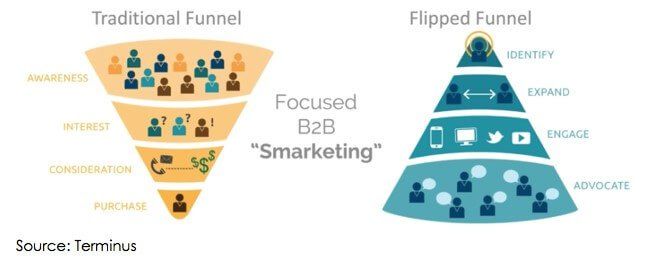
Instead of starting with mass outreach to generate leads, ABM starts by identifying a select list of target accounts (often high-value prospects or strategic customers) and then personalizing campaigns explicitly for those accounts.
ABM treats each target account as its own market.
Also, in ABM, marketing and sales teams work together closely to win and grow those specific accounts by delivering personalized content and experiences to key stakeholders at each account.
Let’s look at the core principles of ABM that answer the ABM versus Traditional Marketing debate:
ABM zeroes in on a limited number of high-value accounts that have the greatest potential value. Instead of seeking “as many leads as possible,” ABM marketers prioritize quality over quantity.
These target accounts are often chosen based on strategic fit, revenue potential, or other factors indicating they’re ideal customers (sometimes using an Ideal Customer Profile as a guide).
Campaigns are then customized for each target account (or clusters of very similar accounts). ABM content speaks directly to an account’s specific business challenges, needs, and stakeholders.
Rather than generic slogans, ABM might deliver a whitepaper addressing Company X’s industry pain points, or even something as tailored as a personal video or a customized demo for that account.
This high level of relevance drives greater engagement, and that in turn boosts conversion rates.
Statistical proof: 75% of marketers in one survey reported higher engagement from ABM campaigns than from broad marketing initiatives.

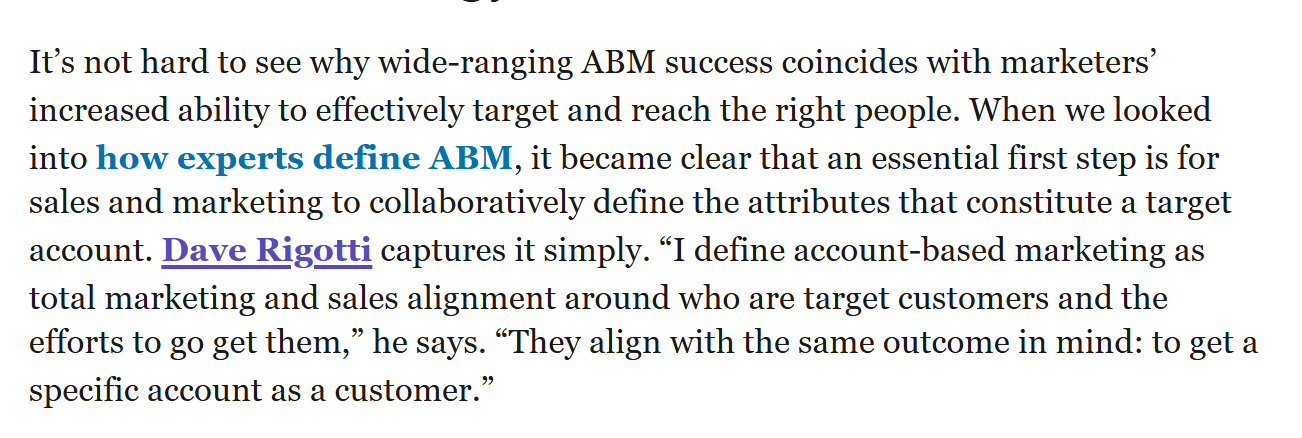
ABM blurs the line between marketing and sales teams.
Both collaborate from the start to define target accounts, craft personalized outreach, and move accounts through the pipeline together.
This alignment ensures that marketing efforts are directly supporting sales goals (and vice versa) on the same set of accounts.
So the blame game of “Sales isn’t good enough at closing deals”, or “Marketing always throws bad leads at us” is done away with in ABM!
Unlike one-off lead generation, ABM has a long-term view. It’s not just about acquiring a new account, but also about nurturing and expanding that account’s value over time.
Marketers practising ABM often continue personalized marketing to existing clients for upselling, cross-selling, and retention. In other words, the marketing doesn’t stop at the sale.
ABM relies on data and analytics to choose accounts and measure success. Marketers use intent data, firmographic data, and engagement metrics to select target accounts and tailor content.
Success metrics in ABM also differ from traditional marketing: instead of just counting leads, ABM looks at account-specific metrics like:
By tracking these, ABM provides clear insight into how marketing efforts are impacting the pipeline and revenue at the account level.
Quick Fact: Account-Based Marketing isn’t something totally new. It builds on the idea of one-to-one marketing. The term “Account-Based Marketing” was officially coined in 2003 by the IT Services Marketing Association (ITSMA), and the flipped funnel was officially recognized:
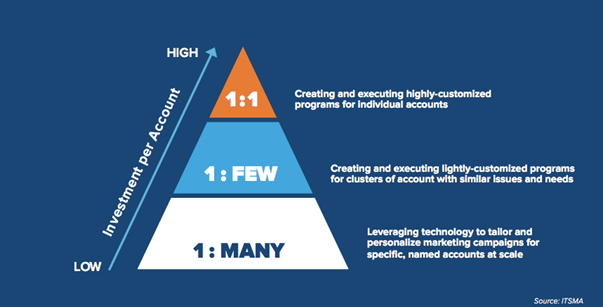
Consider a famous example from Engagio, an ABM-focused software company. Engagio wanted to get the attention of executives at a set of target prospect companies during Dreamforce (Salesforce’s big conference).
Instead of sending generic emails, Engagio created custom bobblehead dolls resembling each target company’s key decision-makers and brought these personalized gifts to the conference.

They emailed each target account with a photo of the bobblehead, inviting them to stop by the Engagio booth to pick it up.
This playful, highly personalized campaign helped Engagio stand out and engage their dream accounts in a way traditional ads never could.
Such examples show ABM vs traditional marketing ethos, where ABM is about:
On the other end of the spectrum, another company, Intridea, famously ran a personalized billboard across the street from a single target client’s office, Ogilvy, with a message directed just at them.
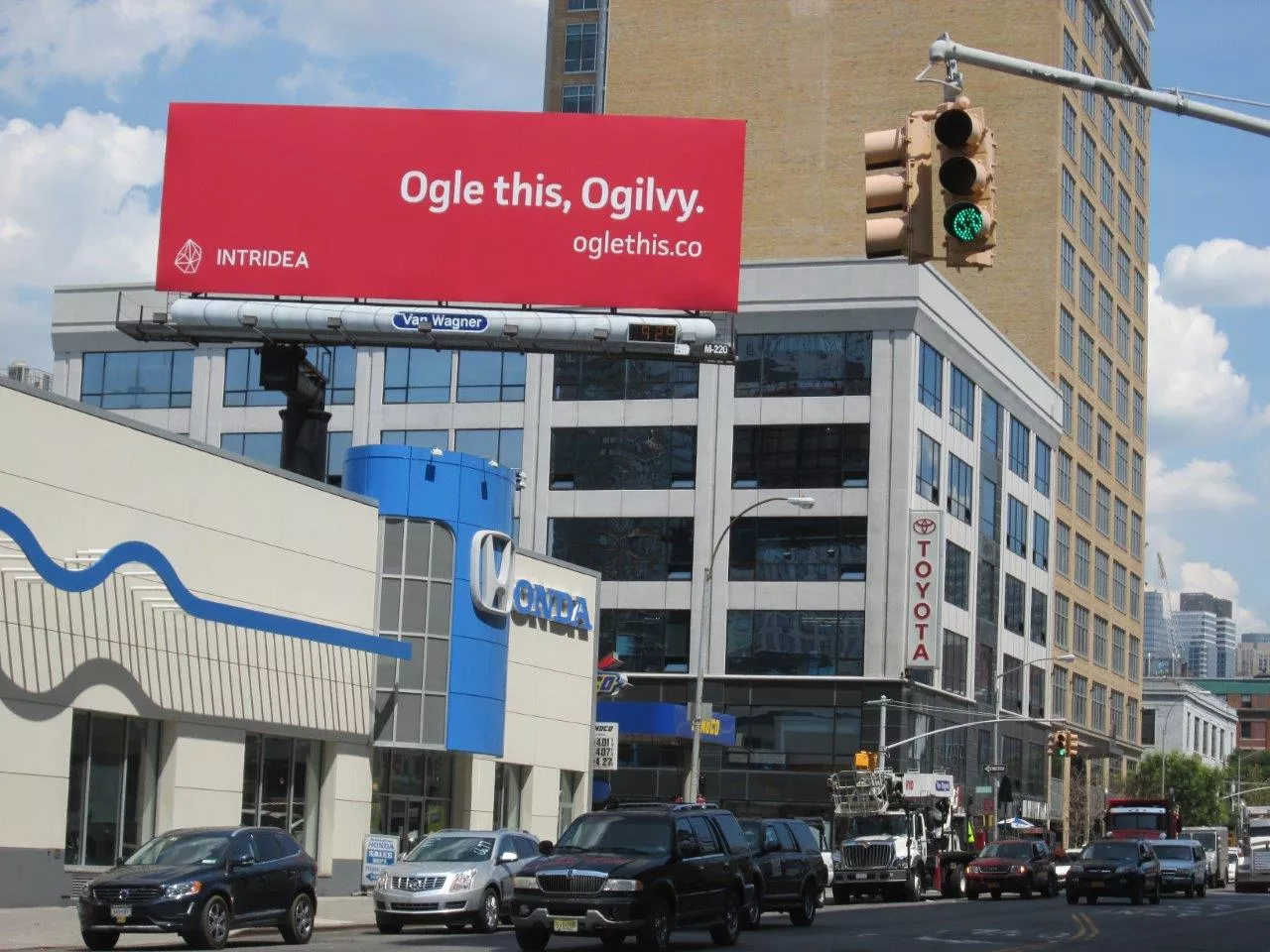
Bold moves like this underline how ABM flips the script from reaching many anonymously to reaching the right one memorably.
While both traditional marketing and ABM ultimately aim to grow revenue, they differ dramatically in strategy and execution.
Here are the key differences separating ABM from a conventional marketing approach:
Traditional marketing targets a broad audience or market segment, seeking to attract as many prospects as possible into the funnel.
ABM, in contrast, is highly selective, focusing on specific accounts (often just a few dozen or a few hundred companies) that are pre-qualified as high-value. In traditional B2B campaigns, you might blast an email to 10,000 contacts hoping 5% respond; in ABM, you might hand-pick 50 companies and pursue them relentlessly with personalized outreach.
ABM’s mantra is quality over quantity: It would rather have five highly engaged target accounts than 500 lukewarm random leads.
Because of that scope difference, the level of personalization varies greatly. Traditional marketing often uses one-size-fits-all messaging and content for the masses. ABM crafts account-specific content that speaks directly to an individual company’s needs and pain points.
For example, a traditional approach might publish a generic whitepaper, whereas an ABM approach might tailor that whitepaper’s intro to each industry or even include the target company’s name and context in it.
This personalization extends to channels as well. ABM might involve custom microsites or landing pages for each account. For instance, tools like Demandbase help with this:
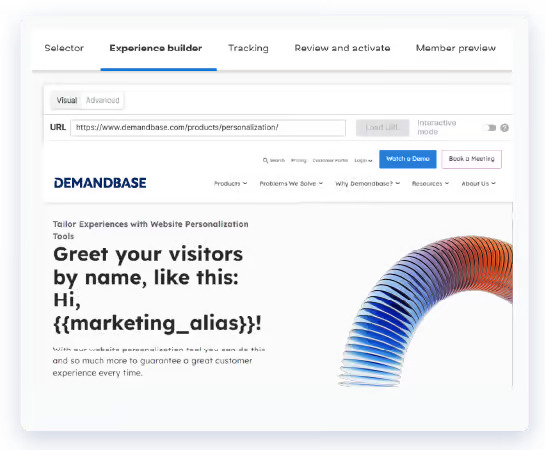
Or personalized emails referencing the prospect’s company situation, or even custom gifts and event invitations.
The result is that prospects see content that feels uniquely relevant to them, which increases engagement.
Perhaps the most visual difference is the marketing funnel orientation – we discussed this before in the article.
Traditional marketing fills the top of the funnel with a wide audience and then filters down; many leads enter, and a few convert at the bottom.
ABM inverts the funnel: It starts with a narrow list of target accounts at the “top” (actually the bottom point of a flipped funnel) and focuses efforts on expanding engagement within those accounts.
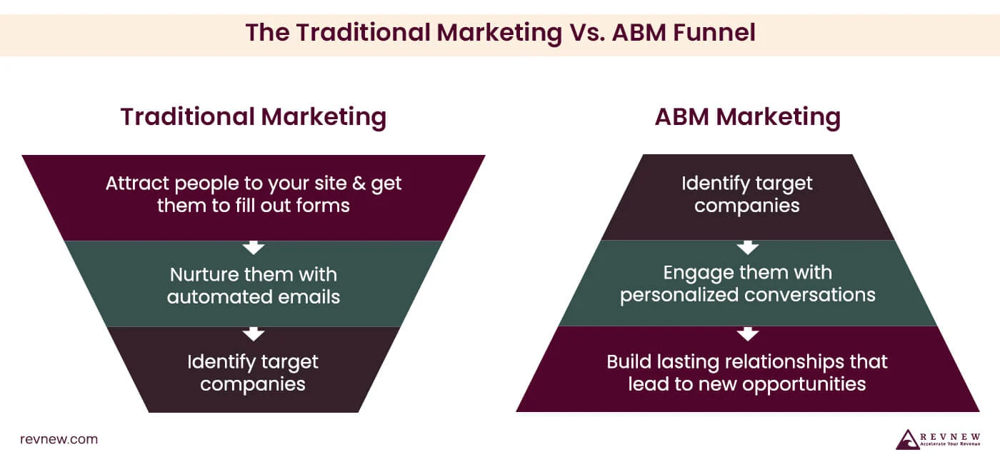
Traditional marketing metrics focus on volume and efficiency like number of leads generated, cost per lead, conversion rates through each funnel stage, impressions, and overall campaign ROI. ABM metrics focus on depth and impact within target accounts.
For ABM, key metrics include account engagement scores (are the right people at the account spending time with our content?), number of qualified meetings or opportunities at each target account, deal win-rate for targeted vs. non-targeted accounts, expansion revenue (upsell/cross-sell) in those accounts, and overall revenue influenced by ABM efforts.
For example, rather than bragging about “5,000 leads generated,” an ABM program might report “Engaged 40 out of 50 target accounts, created 30 new opportunities, and increased average deal size by 20%.”
Quick Statistic: Demandbase’s benchmark report 2024 found that 81% of marketers say ABM delivers a higher return on investment compared to other marketing initiatives.
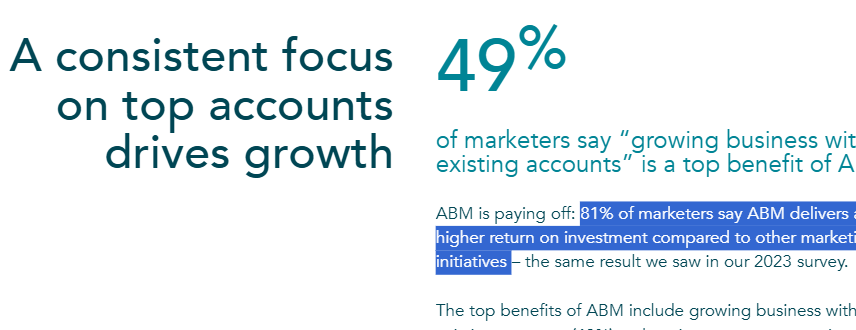
Traditional marketing often operates somewhat separately from sales. Marketing generates leads, then hands them off to sales to work.
And then the blame game starts…
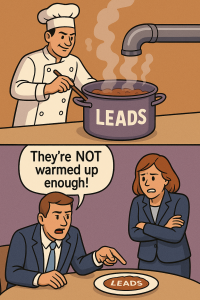
ABM, by necessity, requires tight integration with the sales team at every step
Marketing and sales jointly select target accounts, coordinate outreach (marketing might warm up an account with tailored ads and content before sales calls, for instance), and share insights.
This synergy means that in ABM, marketing is more accountable for real sales outcomes (pipeline and revenue), and sales teams are more involved in upfront marketing planning.
The resulting alignment ensures a better experience for the prospect too. They aren’t receiving disconnected messages from marketing and sales, but rather a unified, account-specific approach.
In traditional marketing, campaigns are often run at the segment or market level. E.g. a campaign targeting “mid-size tech companies” or “finance professionals” as a group. ABM campaigns are often individualized at the account level.
There are actually tiers of ABM approach: One-to-One ABM (completely bespoke campaigns for single accounts), One-to-Few (personalized campaigns targeting small clusters of similar accounts), and One-to-Many (using technology to personalize marketing to hundreds of accounts in a scalable way).
But even one-to-many ABM involves segmentation far narrower than typical broad marketing.
You might personalize content for 100 named accounts in the software industry, rather than blanket the whole industry.
Ok, so imagine you have launched a SaaS business.
Now, at this point, you’ll start with making a fancy blog with a lot of effort and a lot of SEO keywords.
The, you’ll see only quality isn’t enough, and you’ll end up buying backlinks (good backlinks start at $250/unit).
And then you’ll sit waiting for leads to land on pages, fill forms, etc. – and you’ll blast them with e-mails.
Now, here I want to break something really important to you: I, as a writer, have been downloading a lot of lead magnets from different high-tech SaaS websites. But as a freelance writer, I was never their ICP.
In fact, Factors.ai even called me (please leave poor visitors like me with only educational intent alone) – what an utter waste of resources. Just think, why would a writer buy an ABM tool?
And this is exactly where traditional marketing sucks. You passively wait for leads, then run behind MQLs with a thousand shiny different tactics, only to realize that this lead won’t ever buy what you sell.
And this is exactly where ABM is great. As Yulia Olennikova (marketing expert) points out, “The biggest value of ABM is not what you do, but what you don’t”

In ABM, you don’t:
In ABM:
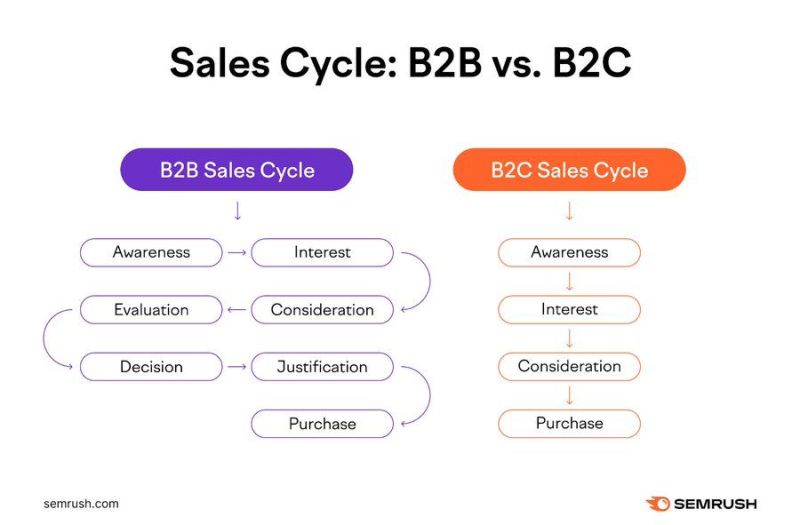 B2B decisions are made by Decision Making Units (DMUs)/Buying Committees, not individuals. And these committees can be large. ABM experts like Debjit Sen point out that 5-6 decision makers in a single account is the norm now:
B2B decisions are made by Decision Making Units (DMUs)/Buying Committees, not individuals. And these committees can be large. ABM experts like Debjit Sen point out that 5-6 decision makers in a single account is the norm now: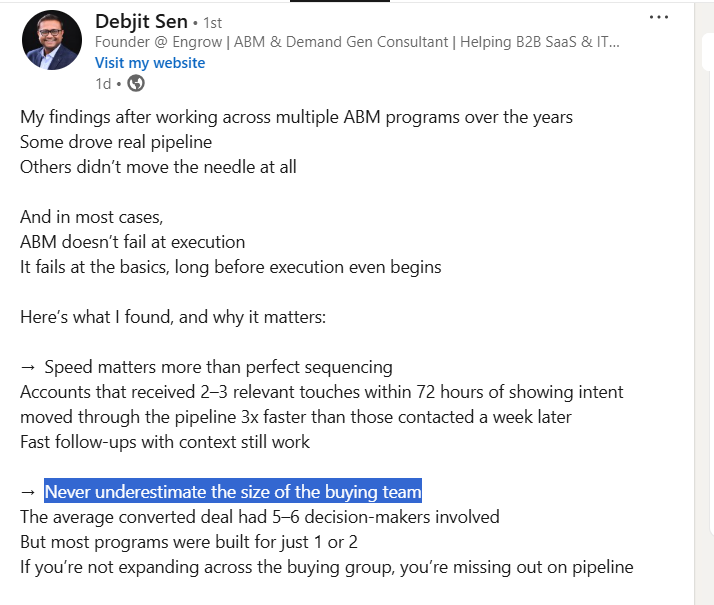 Moreover, 6sense’s B2B Buyer Experience Report pushes the average DMU size further to 11! So, traditional marketing’s MQL obsession makes no sense while targeting huge accounts for selling complex B2B solutions.
Moreover, 6sense’s B2B Buyer Experience Report pushes the average DMU size further to 11! So, traditional marketing’s MQL obsession makes no sense while targeting huge accounts for selling complex B2B solutions.You should go for ABM if:
You should go for Traditional Marketing if:
And, yes, you can run them both too. In fact, if you already have a good demand generation motion that’s performing great, you of course don’t have to stop it. You can start ABM simultaneously and it will help you increase your ACV.
If you are thinking of running ABM now, I suggest two things:
And regarding ‘Why use ZenABM?’, here’s why:
ZenABM pulls company level LinkedIn ad engagement data (impressions, clicks, and engagements) and ad spend for each of your LinkedIn ad campaign:

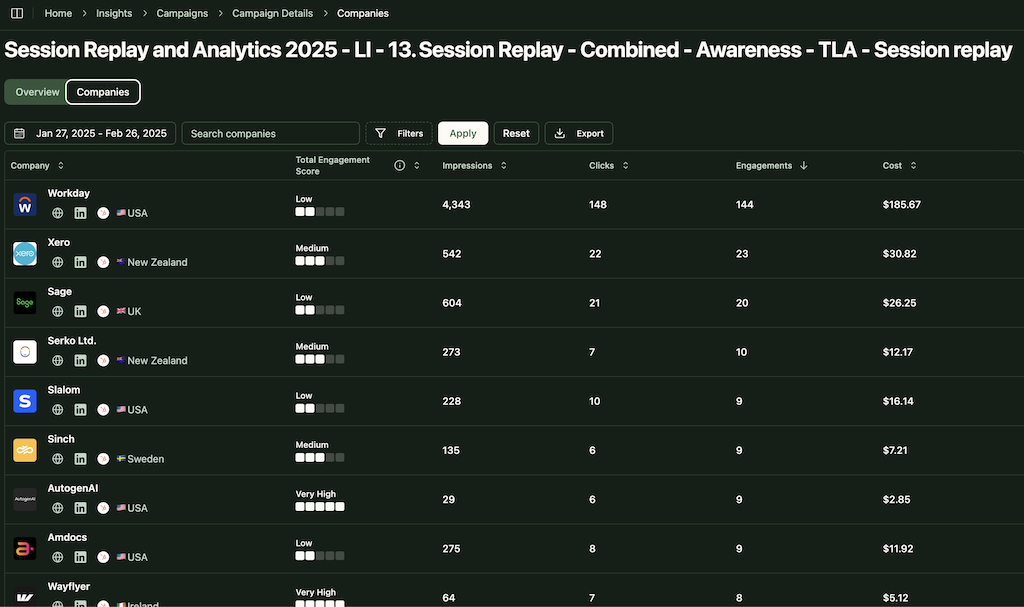
Apart from giving you raw engagement data of each company with each campaign, ZenABM sums up the historic and current engagement rate of all companies across all your ad campaigns to give you a lead score – a score telling you how aware or enagaged a company is with your overall brand and campaign.

Plus, based on these engagements and your CRM data, ZenABM assigns an ABM stage to each account.
The best part? The engagement thresholds for these ABM stages are customizable at the user’s end:
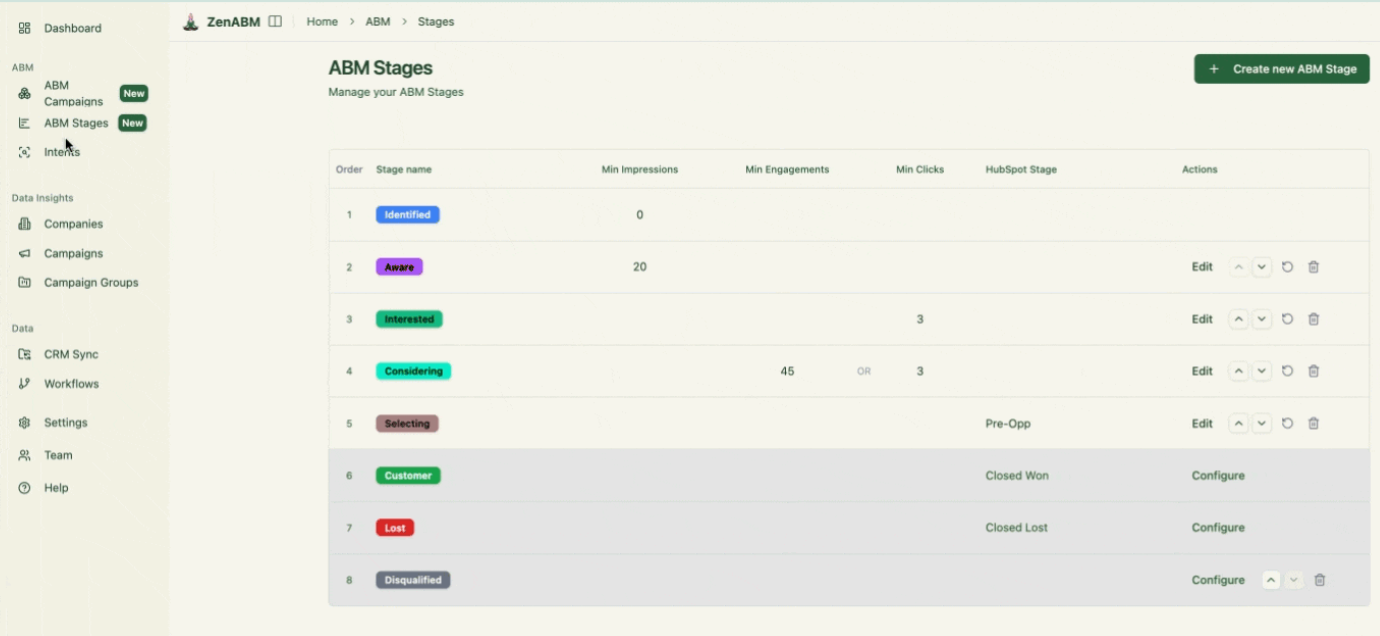
We just saw that ZenABM tracks the ABM stage of each account based on engagement and CRM data.
To add more convenience for your sales team, ZenABM assigns hot accounts (accounts that have reached the interested stage) to your BDRs in your CRM:

so, your BDR outreach is immediate to hot accounts without manual daily look ups and manual alerts to your BDRs in, say, Slack.
While your run ABM on LinkedIn, your marketing team will live in ZenABM and MAPs, but sales team prefer their comfort zone – the CRM.
Well, for bridging the gap and eliminating manual data downloads and uploads, ZenABM automatically pushes all engagement data for accounts as company properties to your CRM:
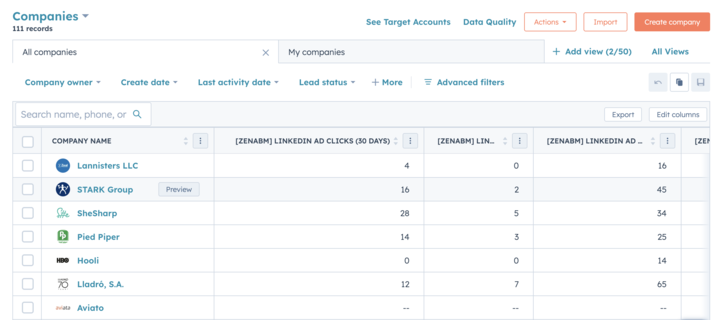
And as for the other way of this two-way CRM integration, ZenABM matches engaged companies to the deals in your CRM and pulls the deal value of each company.
ZenABM, empowered with its company matching and deal-value-pulling feature, provides you with ready-made ABM analytics and ROI attribution dashboards.



Many pro ABMers use third-party tools like Bombora or ABM giants like Demandbase or RollWorks to find the qualitative intent (the pain-point, the feature, or the offer that the prospect is interested in). They do this by tracking the keywords being searched by accounts’ members:
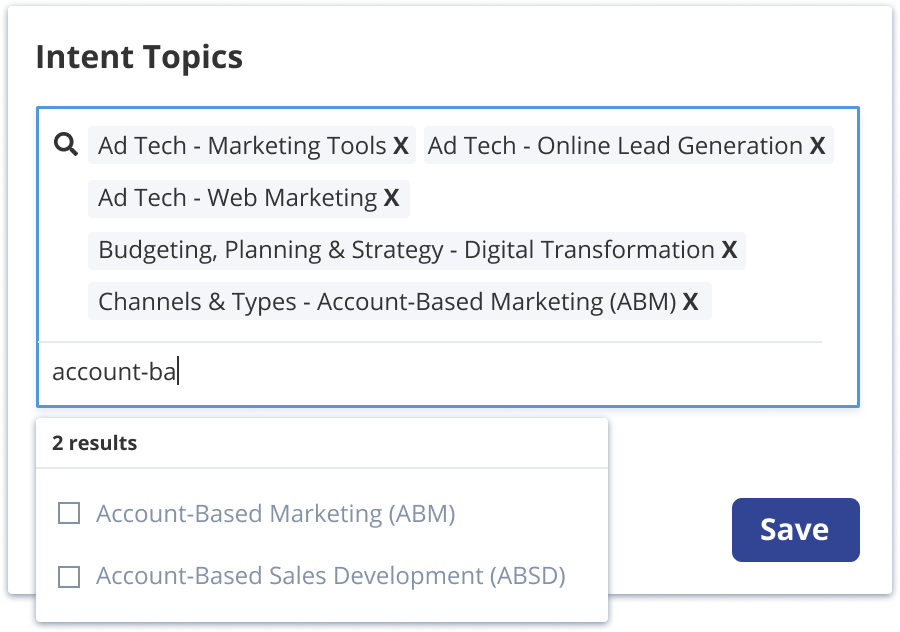
But I suggest a better way: Stop paying for third-party data and embed qualitative intent in your ads themsleves which you are already paying for anyways.
For instance, if you have a product management SaaS, make different ad campaigns for different intents like product analytics, onboarding, session recording, all-in-one, etc.
Something like this:
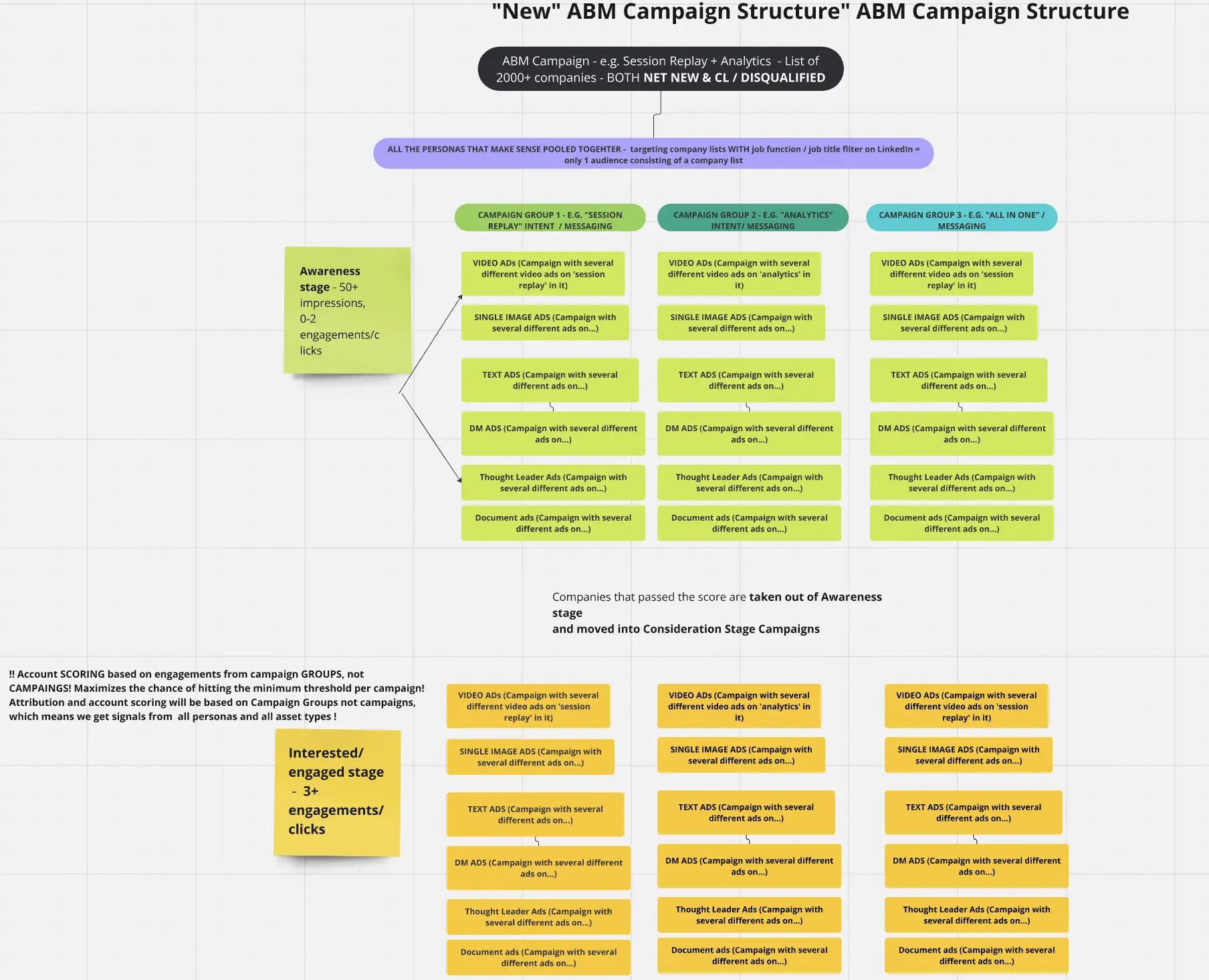
Then, tag each campaign with intent in ZenABM, and ZenABM will tell you the qualitative intent of each company:

It will also group all companies with similar intent together for your convenience:
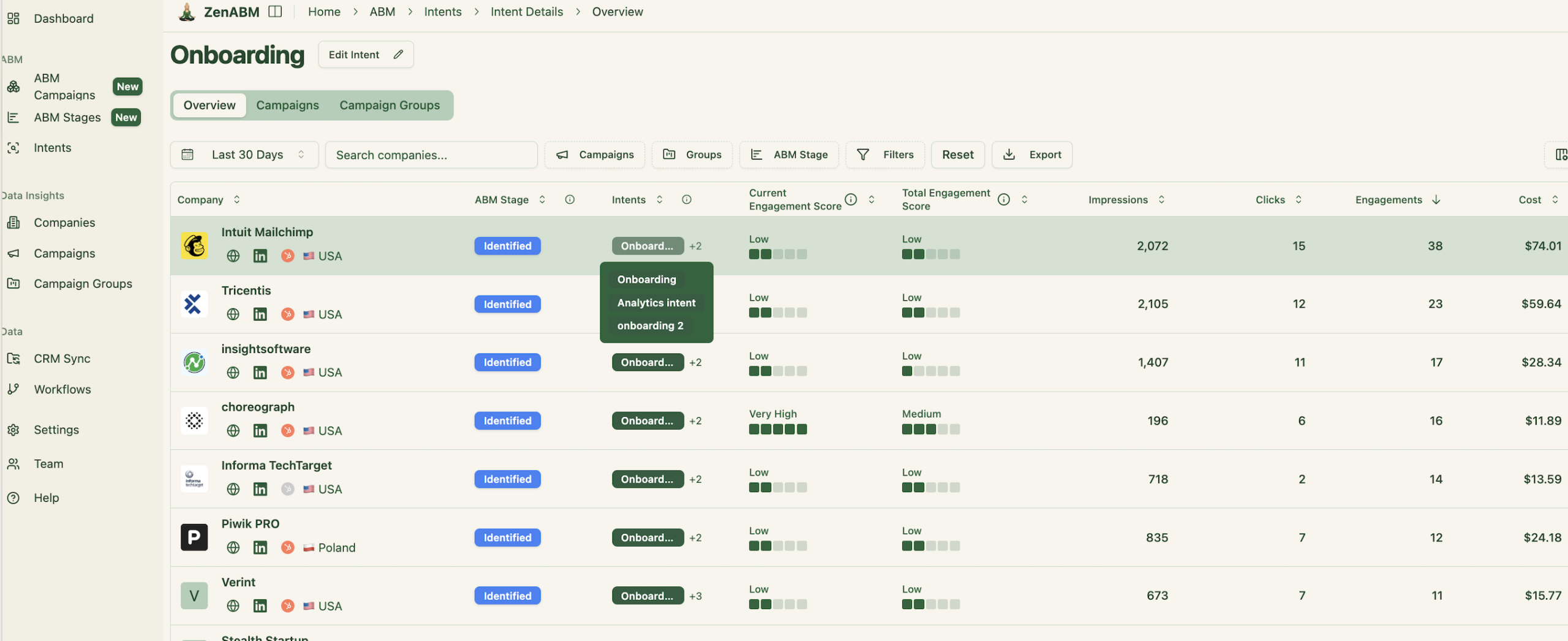
PLus, ZenABM will also push intent as company-property to your CRM:
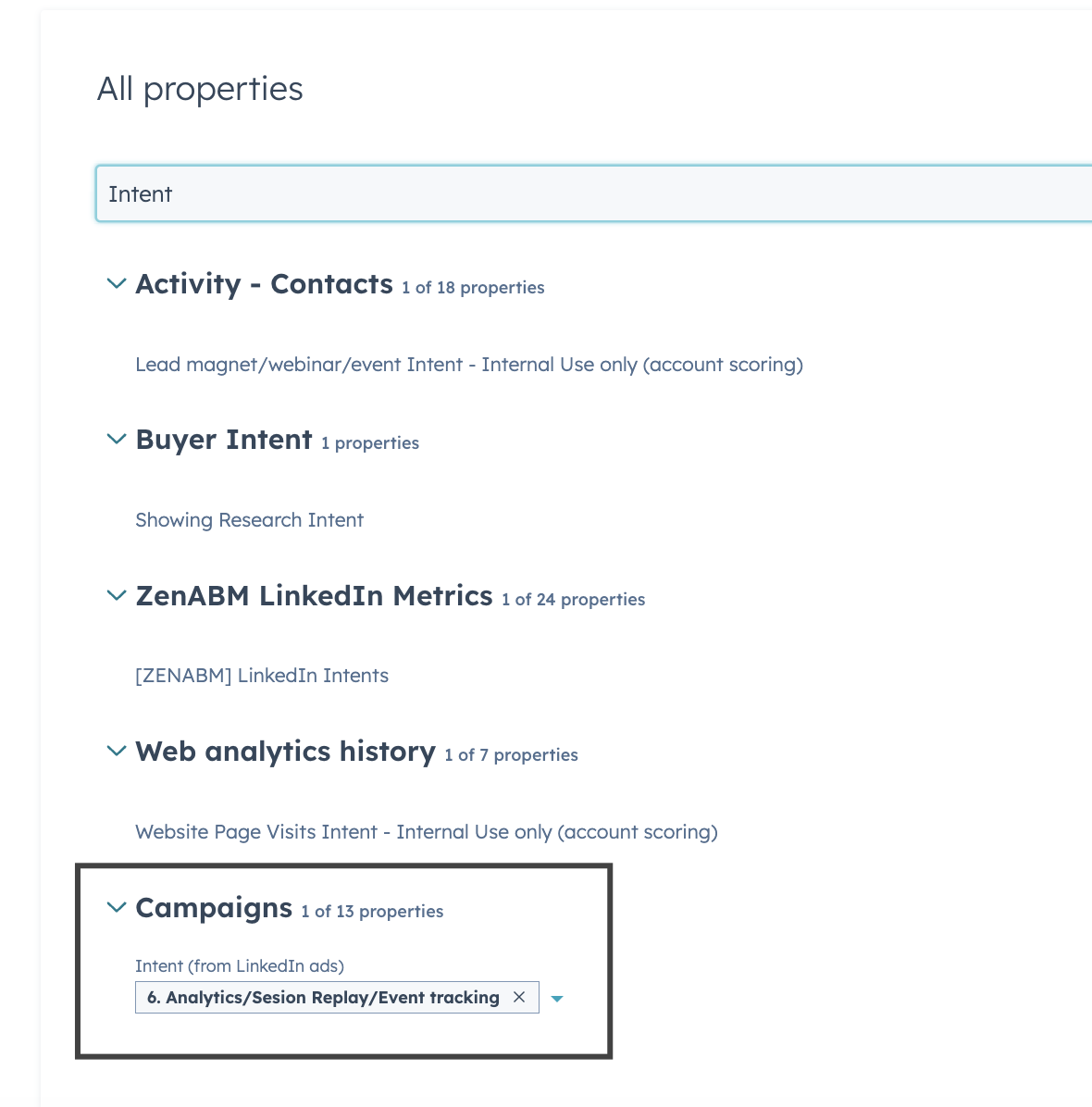
So, now your BDRs won’t just know the hot accounts, but also what to talk about with the accounts during the outreach.
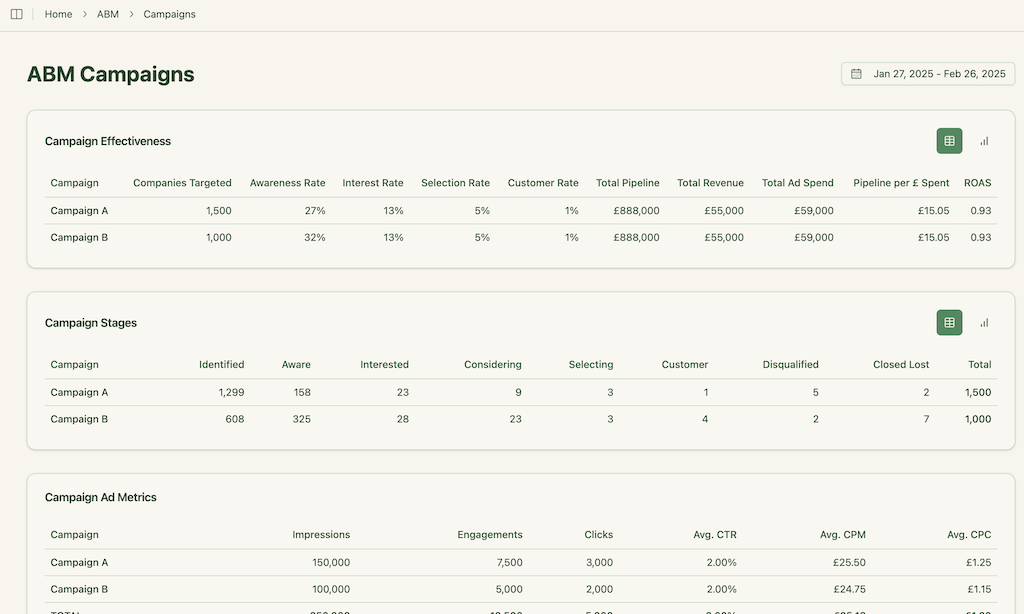
ZenABM clearly maps out the number of companies in each stage – from initial to final stages- and also how they move. This helps you find where the friction is.
For instance, if a lot of companies are moving from ‘aware’ to ‘interested’ but don’t move out of ‘interested’, you know where the friction is and can act accordingly.
ABM vs Traditional Marketing isn’t a rivalry. It’s a strategic choice based on your business model, deal size, and buyer behavior.
Traditional marketing is great for reach, awareness, and high-volume, low-touch sales. But if you’re in B2B, chasing six-figure deals with 5+ decision-makers, you can’t afford to spray and pray.
That’s where ABM shines. It’s precise, personalized, and built for pipeline, not pageviews. You don’t chase leads. You pursue the right accounts with purpose, insight, and alignment.
And if you’re running ABM on LinkedIn, don’t guess. Use a tool like ZenABM to track real engagement, score intent, sync with your CRM, and enable your BDRs to strike while the account is hot.